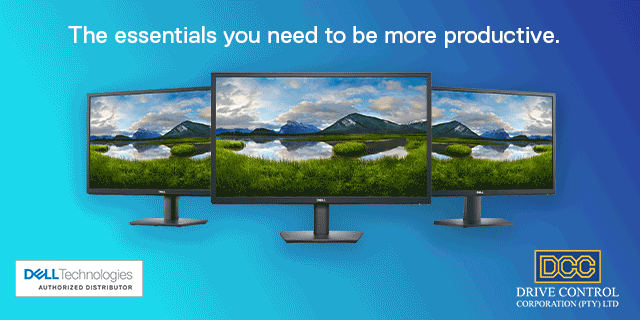Mitigating the perceived risk of Enterprise and Supplier Development partnerships
By Industry Contributor 11 April 2022 | Categories: news
NEWS SPONSORED BY DELL E-SERIES 24" MONITORS FROM DCC:
By Mpopi Khupe, Executive Director at Zevoli Growth Partners
While we talk often about established suppliers having the benefit of economies of scale, we don’t talk enough about the benefit of agility that corporates can tap into through smaller suppliers. For established corporates (both buyer and supplier), decision-making systems and processes are cumbersome, and the governance wheels turn slowly. Small, Medium and Micro Enterprises (SMMEs), on the other hand, can move quickly, responding to changes in the marketplace almost immediately and given the uncertainty of business during a pandemic, the importance of agility cannot be overstated. Although established suppliers are likely to consistently beat the prices of smaller suppliers, cost should never be the deciding factor as not all businesses deliver equally when it comes to identifying opportunities to innovate, realising efficiencies by streamlining to save on cost, time and effort.
The building blocks of ESD
Despite the tangible potential value of utilising the services of a smaller, more agile, more innovative, and more responsive supplier, larger organisations remain hesitant and sceptical about taking on the perceived risks of such supply chain relationships with smaller enterprises. While non-delivery, unreliability, and poor service are justifiable concerns, these risks can be alleviated by cultivating a relationship of trust and dependability between all parties. Instilling confidence and assurance of service is crucial to the sustainability of procurement relationships with Small and Growing Businesses (SGBs) through structured, measurable mechanisms that ensure an SMME is adequately supported to fulfil its obligations and grow in a sustainable manner, delivering shared value.
ESD shouldn’t be ‘all or nothing’
The supply chain operates on strict supplier management KPIs intended to ensure that maximum value is received for the money spent by corporates with suppliers.
It is therefore understandable that the supply chain strives to operate without drastically compromising those KPIs by trying a different, less established supplier if a different supplier has proven to tick all the right boxes. In a 2015 report titled “ROI-related Supplier Diversity,” the Hackett Group found that companies who participate in a long-term supplier diversity program generate a 133% greater ROI than those firms who look no further than the suppliers they traditionally rely upon. Accordingly, this level of ROI indicates that supplier diversity is more than just a corporate obligation, it’s one that makes solid commercial sense.
However, any new relationship in business has to start somewhere and requires a leap of faith. Corporates must take the opportunity to evolve and realise the benefits of promoting innovation and demonstrate their commitment to stimulating and sustaining economic growth in the communities in which they operate. They also need to create healthy competition for established suppliers by tapping into a new network of suppliers.
Enterprise and Supplier Development (ESD) should therefore not be viewed with scepticism but as an opportunity to de-risk the relationship with a small new supplier by leveraging it appropriately to understand and address the capacity and capability gaps that are identified to ensure that the supplier achieves incremental maturity. Achieving supplier diversity is therefore not necessarily a case of switching on one supplier and switching off another without care and consideration on the implications to the business. To achieve and sustain supplier diversity requires a responsive Preferential Procurement strategy. The principles of this strategy should accommodate a number of approaches, for example, ring fencing procurement opportunities, setting local procurement targets, and prescribing minimum B-BBEE credentials for specific commodities. In addition, there are instances where changing suppliers should be a gradual shift from one approach to the other if that suits that particular product or service. It must be pointed out that there is no ‘one-size-fits-all’ approach when it comes to supplier diversity - the needs of each business, corporation, supply chain and industry are different. As a result, there is more than one suitable way to introduce new SMMEs into the supply chain and this is where the right ESD specialist partner can help.
Delivering growth through shared values
The journey to achieving supplier diversity should start with a few wins, such as:
- Integrating supplier diversity (preferential procurement) goals into the corporate’s commercial strategy. This deters buyers from the temptation to focus on quick-win, standalone, once-off initiatives that undermine the importance of the long-term engagement required to develop a sustainable pipeline of diverse suppliers.
- Ensuring that there is organisational alignment. A deliberate effort needs to be made to ensure that buyers are adequately incentivised to channel procurement spending to a new set of small suppliers. For this to succeed, a concerted effort needs to be made to achieve a mindset change in which speed and quality trump all else and to ensure that conflicting messages and processes are addressed and resolved, the absence of which sees buyers sticking to the tried-and-tested way of doing things.
- Synchronicity between the supply chain and SMME development resources. The SMME development efforts of the ESD team must be informed by the insights gained from supply chain on where to focus support to assist the small suppliers to meet their non-negotiables (e.g., technical and mandatory requirements). On the other hand, the supply chain team needs to be open to afford smaller suppliers the ability to challenge the status quo and offer innovative solutions that may yield medium-to long-term benefits.
Most Read Articles

Have Your Say
What new tech or developments are you most anticipating this year?




